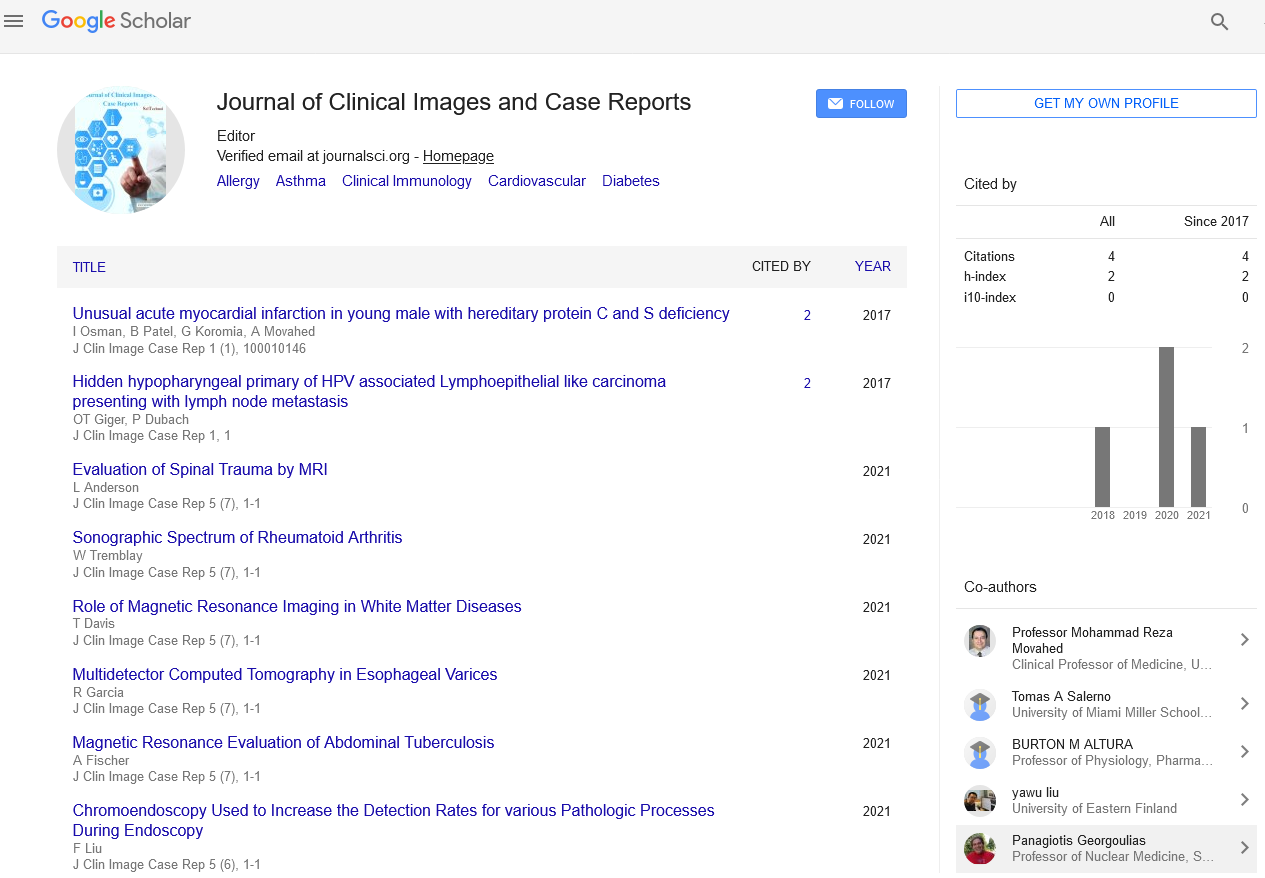Commentary, J Clin Image Case Rep Vol: 7 Issue: 3
Importance of Diabetes and its Classification
Shah Reynolds*
1Department of Pediatrics, University of Cincinnati College of Medicine, Cincinnati, USA
*Corresponding Author: Shah Reynolds,
Department of Pediatrics, University of
Cincinnati College of Medicine, Cincinnati, USA
E-mail: reynolds.s@gmail.com
Received date: 02 June, 2023, Manuscript No. CICR-23-107543;
Editor assigned date: 05 June, 2023, PreQC No. CICR-23-107543 (PQ);
Reviewed date: 19 June, 2023, QC No. CICR-23-107543;
Revised date: 26 June, 2023, Manuscript No. CICR-23-107543 (R);
Published date: 06 July, 2023, DOI: 10.4172/CICR.1000255.
Citation: Reynolds S (2023) Importance of Diabetes and its Classification. J Clin Image Case Rep 7:3.
Description
Diabetes mellitus, commonly referred to as diabetes, is a chronic metabolic disorder that affects millions of people around the world. It is characterized by high blood sugar levels due to the body's inability to produce enough insulin or effectively use the insulin it produces. The condition can lead to various health complications and significantly impact a person's quality of life.
Types of diabetes
There are three main types of diabetes: Type 1 diabetes, Type 2 diabetes, and gestational diabetes.
Type 1 diabetes: Type 1 diabetes, also known as insulin-dependent diabetes, is an autoimmune disorder that occurs when the body's immune system improperly attacks and destroys insulin-producing beta cells in the pancreas. This type of diabetes typically develops in childhood or adolescence and requires lifelong insulin injections or the use of an insulin circulation for blood sugar control.
Type 2 diabetes: Type 2 diabetes, the most common form of diabetes, occurs when the body becomes resistant to the effects of insulin, or when the pancreas fails to produce enough insulin to maintain normal blood sugar levels. It is frequently associated with lifestyle factors, such as sedentary behavior, unhealthy eating habits, and obesity. Type-2 diabetes can be regularly managed through lifestyle changes, medication, and sometimes insulin therapy.
Gestational diabetes: It develops during pregnancy and usually resolves after childbirth. It occurs when hormonal changes during pregnancy lead to insulin resistance, resulting in high blood sugar levels. While most cases can be managed through diet and exercise, some women may require insulin treatment to control their blood sugar levels.
Causes and risk factors of diabetes
The exact causes of diabetes are complicated and vary depending on the type. For type 1 diabetes, genetic predisposition and environmental triggers, such as viral infections, are thought to play an important role. On the other hand, type 2 diabetes is closely connected to lifestyle factors, including poor diet, lack of physical activity, and obesity. Additionally, genetics can also contribute to an individual's risk of developing type-2 diabetes. Gestational diabetes is primarily influenced by hormonal changes during pregnancy, but certain risk factors such as a family history of diabetes or being overweight can increase the probability of its development.
Symptoms and complications of diabetes
The symptoms of diabetes can vary depending on the type and the individual's overall health. Common symptoms include excessive thirst, frequent urination, weight loss, fatigue, blurred vision, and slow-healing wounds. These symptoms are more determined in type 1 diabetes, as it commonly develops, while type 2 diabetes may have more gradual onset, leading to the condition being undiagnosed for a long time. Diabetes can lead to severe health complications. Chronic high blood sugar levels can damage blood vessels, nerves, and organs, leading to cardiovascular disease, kidney damage (nephropathy), nerve damage (neuropathy), and eye problems (retinopathy). Additionally, diabetes increases the risk of ulcers on the feet and infections in extreme cases may result in amputations.
Diagnosis and screening
Diagnosing diabetes involves several tests to measure blood sugar levels and assess the body's response to glucose. The most common tests include Fasting Plasma Glucose (FPG), Oral Glucose Tolerance Test (OGTT), and HbA1c (glycated hemoglobin) test. Regular screening is important for early detection, especially for individuals with risk factors such as family history, obesity, or a sedentary lifestyle.
 Spanish
Spanish  Chinese
Chinese  Russian
Russian  German
German  French
French  Japanese
Japanese  Portuguese
Portuguese  Hindi
Hindi 